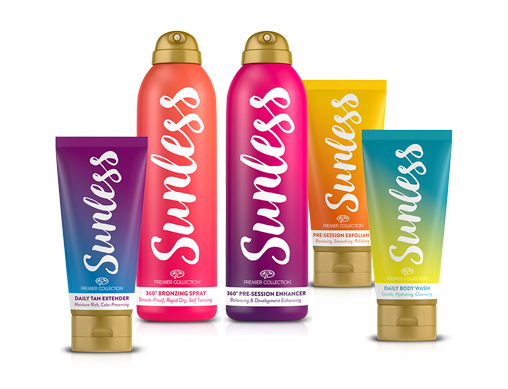It’s prom season, and we all know what that means: spray tans. Not to criticize or judge, because I understand, I’ve done it before, too. However, you should know all the facts before dousing yourself in chemicals for a good picture.
It’s always good to start at the beginning, so let’s discover how these sunless tanners work. These products that create the illusion of a tan can be applied as lotion, creams, and sprays; and majority of tanners include the active ingredient dihydroxyacetone (DHA). If you didn’t know, the top layer of your skin, the stratum corneum, consists of only dead skin cells. DHA reacts with the keratin in this layer to produce pigments called melanoidins which create the fake tanning effect.
Unsurprisingly, DHA was discovered by accident in the 1950s by Eva Wittgenstein as she researched the effects of a medicine containing DHA on children with a rare metabolic disorder. She discovered that when the medicine was put on the children’s bodies, their skin would stain but not their clothes; so, she applied it to herself and within a few hours she had splotches of brown spots on her skin where she had applied the solution. Quickly, companies bottled and sold the solution, increasing in popularity throughout the years.
Up until the 1920s, society viewed people with tan skin as poor. If you had tan skin, that meant you had to work hard jobs in the sun all day, whereas the wealthy elite could sit inside, away from the harsh sun. Even when elites did venture outside the house, they carried parasols–little fancy umbrellas–to protect themselves from the tan-giving sun. Then, the switch flipped. All of a sudden, glowing bronze skin was all the rage.
People would go to extreme lengths to perfect their tan; during World War II, women would use tea bags to create a tanned look. Then, in the 1950s and 60s, the market released the first self-tanning products containing DHA.
So, are self tanners safe to use? Relatively, yes. As you probably know, UV tanning methods are very, very dangerous for your skin. These include tanning beds as well as traditional tanning in the sun. So if you’re going to tan, self tanners are the way to go. Since these fake tans only affect the outermost, dead layer of the skin, it is not as dangerous. Technically, they are the lesser of the three evils of tanning.
Personally, I do not approve of tanning. Of course, I can’t judge, because last year during prom season I used a self tanner. Spring is softball season, and in softball we wear short sleeved t-shirts or jerseys. And, being an outside sport, we are in the sun a lot. Every day I would spend about three hours in the sun, which built up an impressive farmer’s tan, meaning I would be tan from my hands to about halfway up my upper arm and then pale. Not to mention, my face was also tan, too. This was not good. At the time, in my mind, this ranked as a pretty big problem because my prom dress had a sweetheart neckline, showing off my pale shoulders and collar in stark contrast to my tan arms and face.
So, I turned to the popular method: self tanner. I used an in-shower tanning lotion that gradually tans you as you put it on day after day. However, if you decide to use this, be careful with putting it in places with many crevices such as armpits or knees because they can soak up a lot of DHA and turn a darker color than the rest of your body.
Looking back on it now, I only used tanner to look good in my prom pictures, but I’m sure no one even noticed or cared. It’s one event in your whole life, and at least for prom and typically in life as well, everyone is too busy caring about what they look like to even notice what you look like.
Additionally, tanning brings up issues of status. Having a fake tan could be classified as an indicator, especially in high school. Fake tans seem to indicate popularity status or interests or even financial situations. So as prom season approaches, look for those fake tans in the hallway and maybe you can educate your friends on what their tan really is.

Leave a Reply